 |
INTO THE INTERIOR |
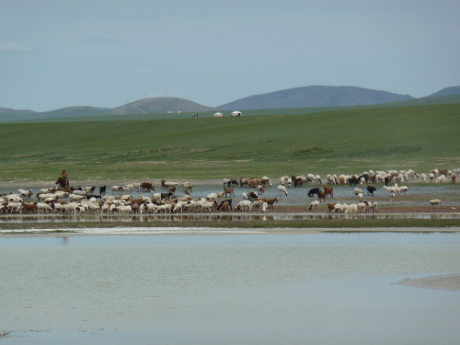 |
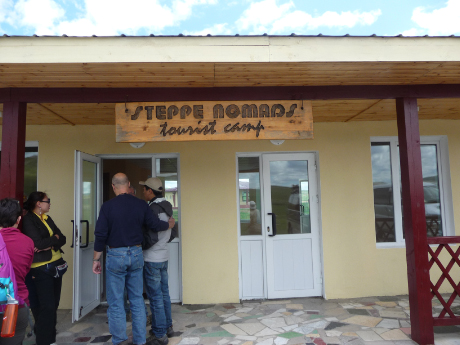 |
|
| As we continued on our way we began to see some of the beautiful scenery that Mongolia has to offer. This is not the desert area; there is ample water although grass is sparse. These horses were enjoying a dip in the lake, perhaps to escape the constant irritation of the gnats.
|
Then we arrived at our camp. where we would have our first opportunity to stay in gers. | |
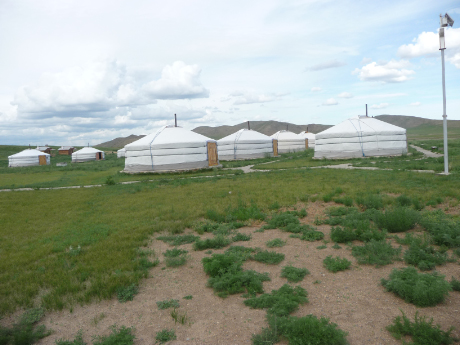 |
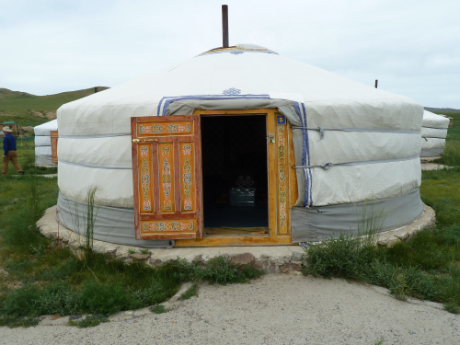 |
|
| These gers were simpler than the one we had visited--no solar panels, so no electricity.
|
Like all gers, they faced south and were entered through a painted wooden door. | |
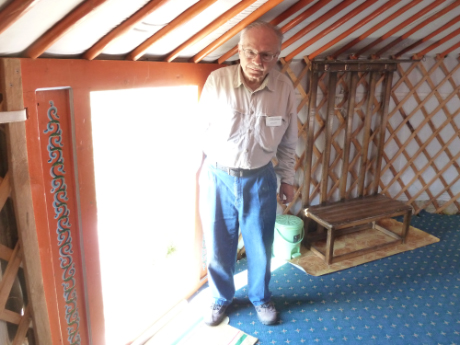 |
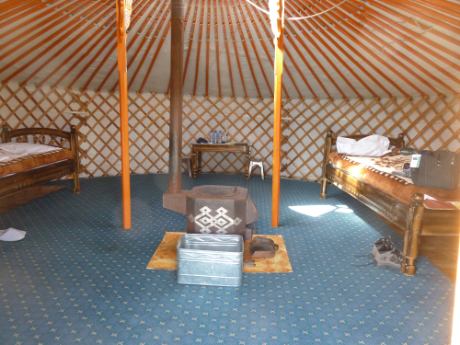 |
|
| The doorways were LOW and the thresholds were high. It is considered bad luck to step on a threshold, so it took a little practice (and more than one bumped head) to master the "duck down and step over" technique.
|
Once you were inside, though, the gers are surprisingly spacious and an open flap at the top (closed in case of rain) provides light during the day. A stove provides heat; ours used wood although most people use dung. | |
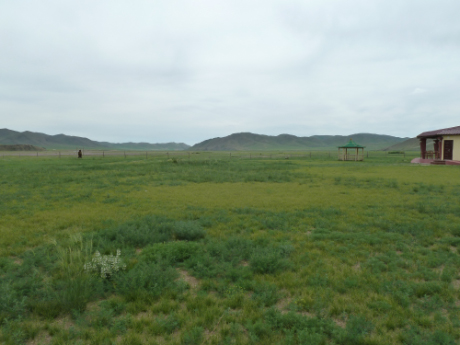 |
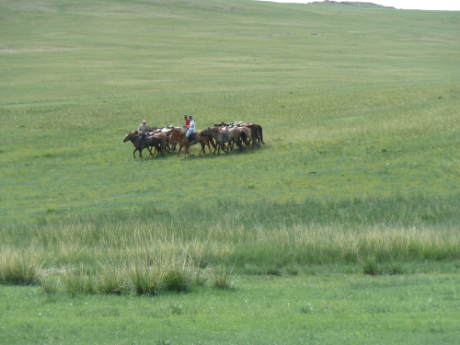 |
|
| And you couldn't beat the view from the room.
|
Ah, here come the horses. I was looking forward to riding a Mongolian horse. Chuck decided to pass on that.
|
|
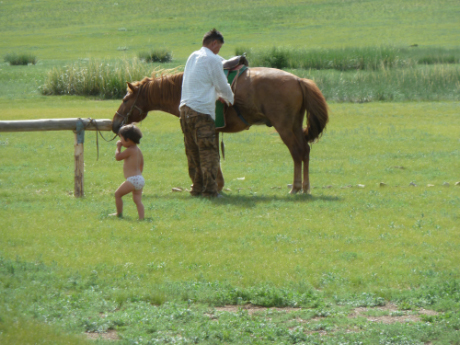 |
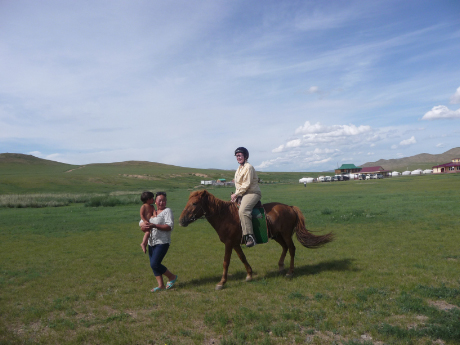 |
|
| This child can hardly walk but I bet he could ride. Mongolian children get on horses almost as soon as they can sit up.
|
The horses may be small but they are feisty! These were not the well-mannered trail horses we ride in the US. They were so hyper that one rider asked to get off as soon as she had mounted. One horse sent his rider (an experienced horseman) off over his head. But once we got used to them it was a fun ride.
|
|
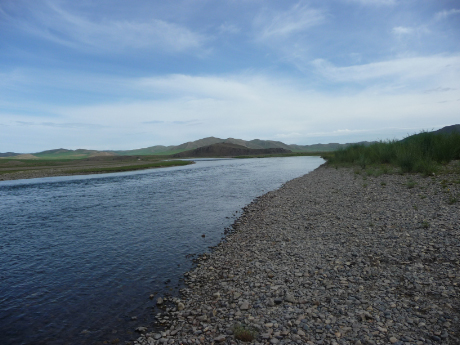 |
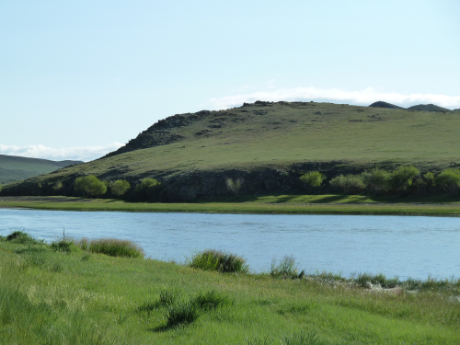 |
|
| While most of us were off riding, Chuck explored the lovely river than ran along the edge of the camp--a peaceful, scenic spot. But it was those of us riding who saw the white-naped crane--too bad the horses wouldn't stand still long enough for us to take pictures.
|
||
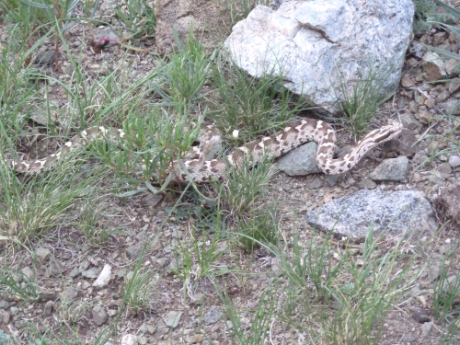 |
That evening we went looking for Argali sheep. The slope was fairly steep and I was towards the back of the group. We had been warned to be quiet so as not to scare the sheep, but I couldn't help crying out when a snake slithered across my path. (I am terrified of snakes.) Jeremy came running over to see the snake and said he wasn't sure what kind of snake it was but that it was a constrictor and not dangerous. I stopped shaking long enough to get a picture. The snake was getting a little agitated so we backed off. Later I showed Ider the picture and told him what Jeremy had said. He looked at at the picture and shook his head. "That is one of the venomous ones," he said. Thanks, Jeremy!
Soon afterwards the clouds rolled in and we got a thunderstorm with huge bolts of lightning hitting the ground. Ider said it was to celebrate July 4. We were soaked when we finally made it to dinner at camp--and no one had actually seen any sheep. |
|
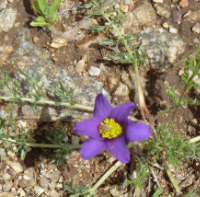 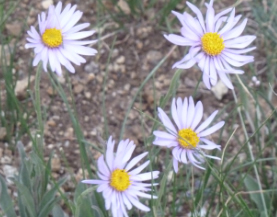  |
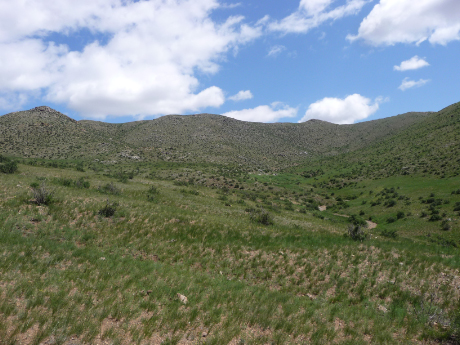 |
|
| The next day we went out looking for sheep again. This time the terrain was much easier and we had time to stop and admire the profusion of wildflowers on the hills. And there were no snakes.
|
There are sheep on those hills. Really, there are. But you need binoculars. No problem - it was a glorious day for a walk. | |
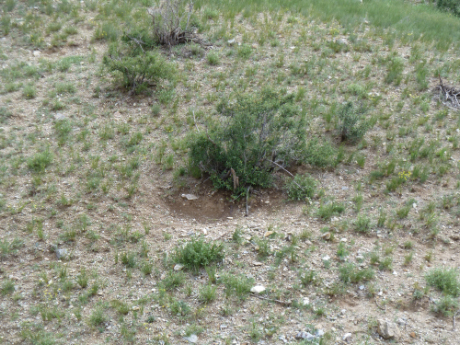 |
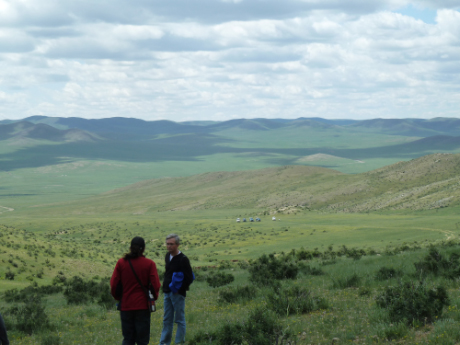 |
|
| The closest we got to the sheep were these "sheep wallows," where sheep have spent the night protected by bushes.
|
Even if we hadn't seen sheep, the view back down the valley was worth the walk up. That is Jeremy the snake expert on the right. | |
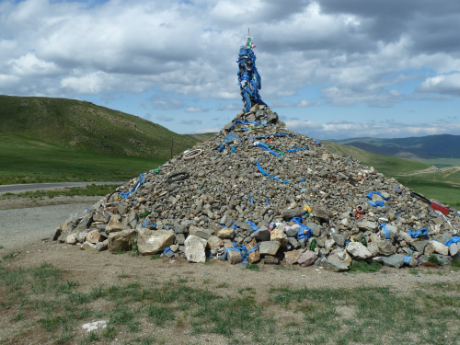 |
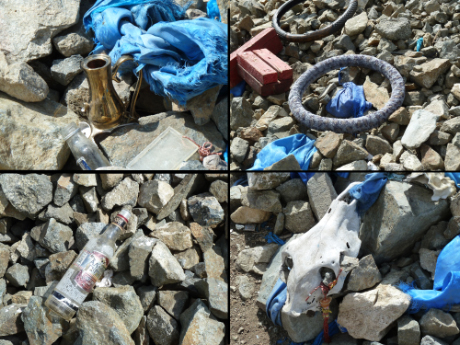 |
|
| As we began our drive back we stopped at one of the many ovoos along the way. These are piles of rocks where people leave offerings. it is customary to walk three times clockwise around an ovoo.
|
People left lots of odd offerings: a small brass container, a steering wheel cover (for safe travel?), the skull of a favorite horse (possibly a Naadam winner), and a Chinggis vodka bottle (empty), among others. People also left money, which no one ever seems to take. |
|
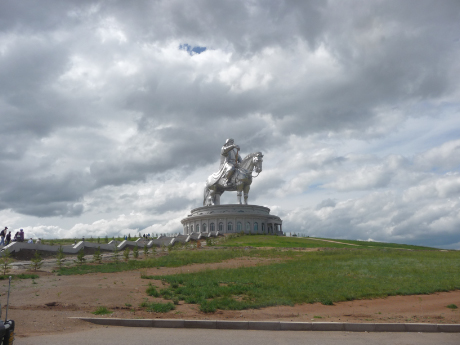 |
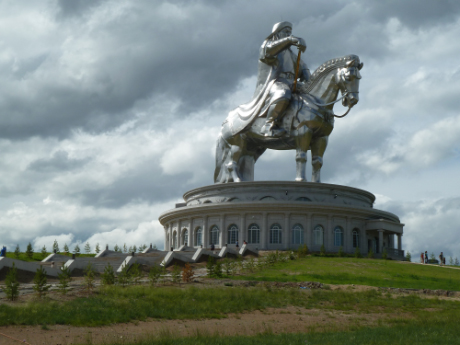 |
|
| Then we went to see the huge statue of Chinggis Khan.
|
This is the largest statue of a horseman in the world and it is the centerpeice of what the Mongolians hope will develop into a tourist village.
|
|
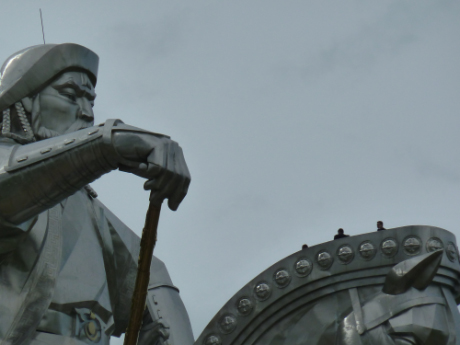 |
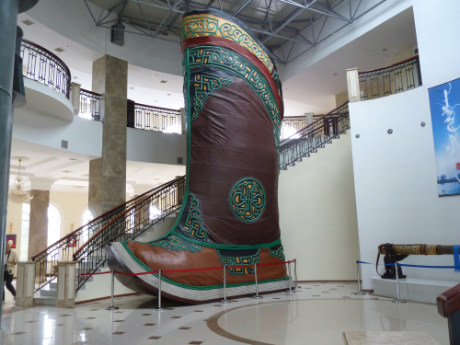 |
|
| You can actually walk up to the top of the statue and come out in the horse's mane. We decided not to. | Everything about Chinggis in Mongolia is oversized, including his boot in the exhibit hall of the statue. | |

|

|
